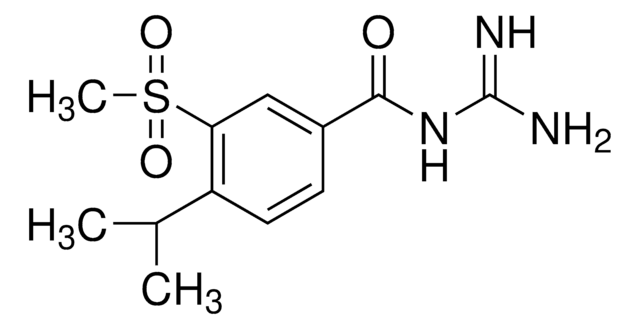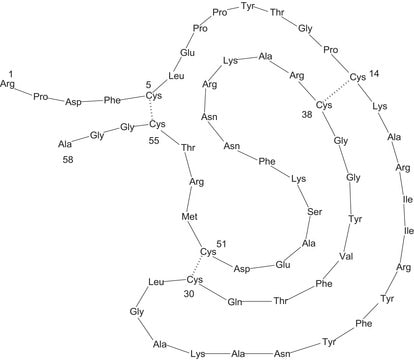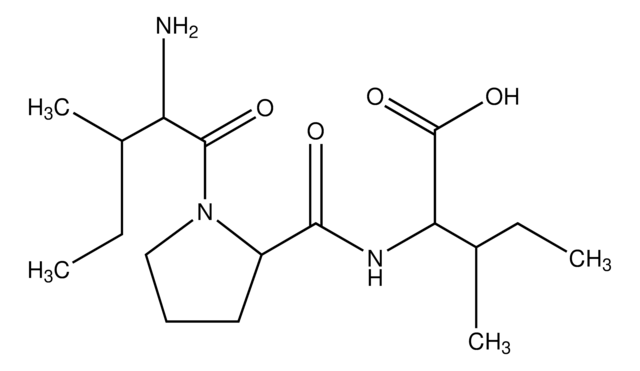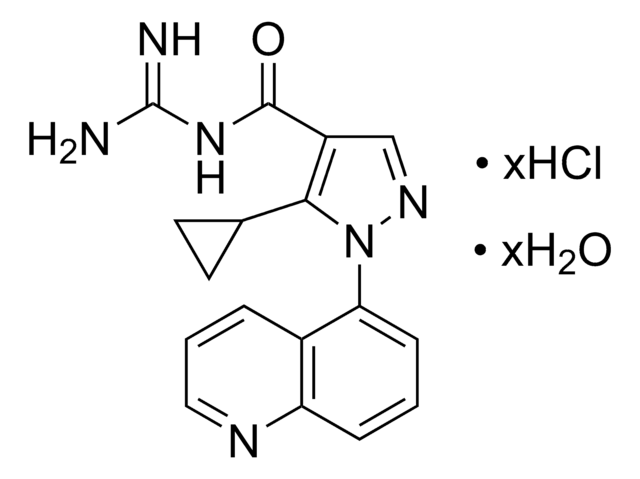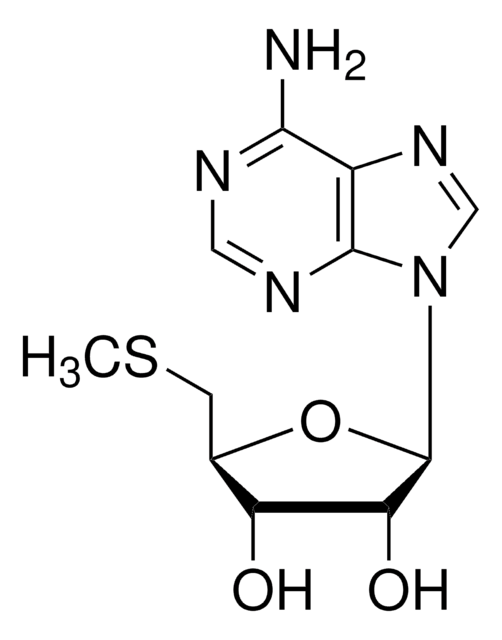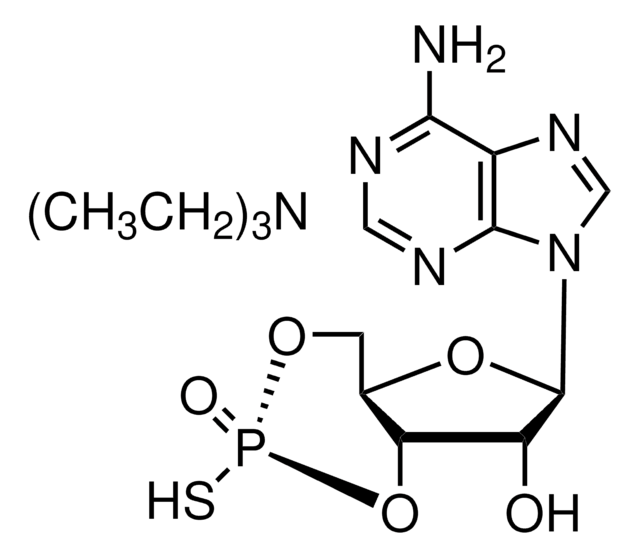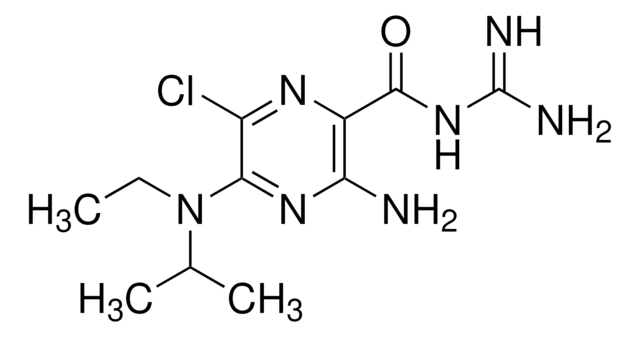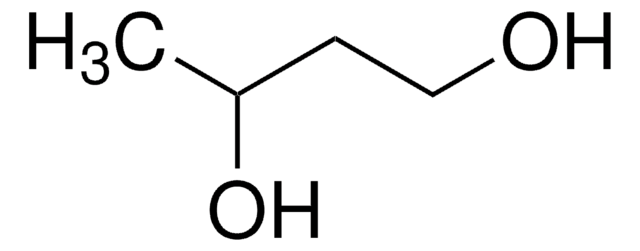推薦產品
化驗
≥98% (HPLC)
形狀
powder
顏色
white to beige
溶解度
H2O: 2 mg/mL, clear
運輸包裝
ambient
儲存溫度
2-8°C
SMILES 字串
O=C(N=C(N)N)C(C)=CC1=CC(C)=CC=C1C=C(C)C(NC(N)=N)=O.[H]Cl.[H]Cl
生化/生理作用
S3226 is a potent and selective NHE3 (NHE-3) inhibitor (IC50 = 20 nM/human NHE3, 3.6 μM/human NHE1, 80 μM/rabbit NHE2) for studying NHE3 physiological as well as pathophysiological roles in kidney and gastrointestinal disorders in vitro and in animal models in vivo.
S3226 is also known as {3-[2-(3-guanidino-2-methyl-3-oxo-propenyl)-5-methyl-phenyl]-N-isopropylidene-2-methyl-acrylamide dihydro-chloride}. S3226 is used to explore the physiological and pathophysiological functions of sodium-hydrogen exchanger 3 (NHE3) in animal models. It is a bismethacryloyl guanidine derivative.
儲存類別代碼
11 - Combustible Solids
水污染物質分類(WGK)
WGK 3
閃點(°F)
Not applicable
閃點(°C)
Not applicable
S3226, a novel inhibitor of Na+/H+ exchanger subtype 3 in various cell types
Schwark J R, et al.
Pflugers Archiv : European Journal of Physiology, 436(5), 797-800 (1998)
J R Schwark et al.
Pflugers Archiv : European journal of physiology, 436(5), 797-800 (1998-08-26)
Inhibition of Na+/H+ exchange (NHE) subtypes has been investigated in a study of the mouse fibroblast L cell line (LAP1) transfected with human (h) NHE1, rabbit (rb) NHE2, rat (rt) or human (h) NHE3 as well as an opossum kidney
Hiromitsu Miyazaki et al.
BMC physiology, 17(1), 1-1 (2016-08-16)
Disturbance of acid-base balance in the inner ear is known to be associated with hearing loss in a number of conditions including genetic mutations and pharmacologic interventions. Several previous physiologic and immunohistochemical observations lead to proposals of the involvement of
Jennifer Foulke-Abel et al.
Gastroenterology, 150(3), 638-649 (2015-12-19)
Human intestinal crypt-derived enteroids are a model of intestinal ion transport that require validation by comparison with cell culture and animal models. We used human small intestinal enteroids to study neutral Na(+) absorption and stimulated fluid and anion secretion under
我們的科學家團隊在所有研究領域都有豐富的經驗,包括生命科學、材料科學、化學合成、色譜、分析等.
聯絡技術服務